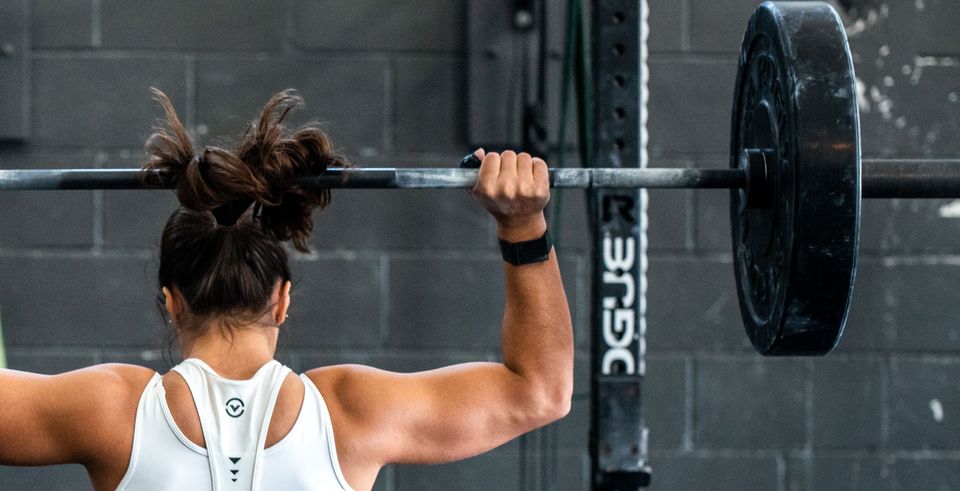To repair or not to repair? That is the question

Let's start this off with a hypothetical situation: You get imaging done on your shoulder and find out that you have a torn rotator cuff. The person reading the image says that "your shoulder is fucked and you need surgery." Are they right? Is that the only option? The short answer: maybe not (depending on a lot of variables and ultimately your own personal situation). Let’s take a look at what the literature on this topic has to say.
To begin, let's take a look at how common asymptomatic rotator cuff tears (RCT) are. There are estimates from 2.1% up to 62% of the population having a full-thickness RCT, with the prevalence increasing with age1,2,3,4,5. The percentage varies quite a lot depending on the study so don't hold on to those numbers too tightly. This shows that asymptomatic RCTs could possibly be quite common and part of the normal ageing process2; however, the fact that they are ‘asymptomatic’ may be related to MANY different variables. Are they truly asymptomatic, are they asymptomatic because life demands as you age may not require you to use your shoulders as much? The list can go on, and the true reason is not yet understood. This also may show that there are different mechanisms at play causing the symptoms, and it may not only be the torn rotator cuff. Is it the main player or just a piece of the puzzle?
Getting into it, the general consensus on the topic seems to be that conservative/non-surgical treatment and surgical treatment have similar outcomes in terms of function, pain, quality of life and mobility1,6. There are no CLINICALLY significant differences, but there is a trend for some STATISTICALLY significant differences when it comes to the Constant score and VAS (function and pain) in favour of surgery. This leads to the conclusion that conservative treatment is advocated as the first line treatment for RCTs.
Taking a deeper look at the studies shows that the surgical methods were mostly the same in all of the studies (this gets outside my scope so I can’t speak too much on this), but the physical therapy (PT) had some variation, and occasionally sub-par protocols…
Before discussing the protocols, let’s go over what some of the current concepts are for PT of RCTs. Like with almost any rehab, a biopsychosocial approach to screen for comorbidities and learn how the person perceives and is coping with their situation is always a good start, along with education and reassurance that is specific to the individual’s needs and learning style. The rehab plan should be individualised, foster self-efficacy, and follow the principles of PROGRESSIVE OVERLOAD7.
There were 3 main studies that popped up in every systematic review and meta analysis. The PT they used was:
- Passive mobilizations, scapular retraction and positioning (increasing every 12 weeks) then progressive resistance and strength training until 6 months total time was reached8
- Passive mobilizations, active and dynamic exercises (I am assuming this means range of motion), correcting posture (...ok…), deltoid exercises after 6 weeks, then continued optimization (whatever that fuckin means) of cuff and deltoid exercises9
- 2 40 minute sessions per week for 12 weeks of ‘CORRECTING UPPER CROSS POSTURE’ and ‘RESTORATION OF MUSCULAR CONTROL AND STABILITY’ (my oh my), with some isometric, eccentric and concentric exercise while maintaining scapular position10
You can probably tell that I am not a fan of the correction of posture and scapular positioning, but I can get into that in another post. The first one had some good progressive overload to restore some muscle mass, and the second one may have had that as well (optimization is a vague term), but the third one seems to lack proper progressive overload. Despite the possible lack of proper progressive overload in some studies, they all still showed that surgery and PT had similar outcomes! This makes the results a little unclear about what works, and it may simply be that it was just the passage of time that had the biggest impact on function and pain8.
There are some interesting points to note from the studies that are worth talking about. First, there are a large number of cuff repairs that fail, one study noted that 73% of repairs failed9. Even though the repairs failed, EVERYONE STILL GOT BETTER! Again, this shows there may be multiple factors leading to the improvement, possibly it is the passage of time, some psychological factors, the rehab involved; it is difficult to say exactly what causes it. Also, as time passes, rotator cuff tears tend to increase in size (if they aren’t fully torn), but yet again these people still get better after the treatment. Is it the PT? Is it the passage of time? Is it the psychological effect of knowing that something is being done? We can’t say. An interesting observation I noticed from Moosmayer’s research, who followed the participants for 10 years, is that the PT group’s improvement seemed to plateau at 6 months, and the surgery group’s improvement at 1 year. These improvements remained at about the same level over the 10 years10,11,12. This has me wondering if there would be further improvement in all outcomes if the PT in BOTH groups was more comprehensive, followed progressive overload instead of looking at posture and scapular kinematics, and was continued for longer - potentially indefinitely.
At the end of the day, the literature shows that the results are similar between surgery and non-surgical care, with both options showing improvement. Whichever decision best suits your personal situation will most likely result in positive outcomes!
- Ryösä A, Laimi K, Äärimaa V, Lehtimäki K, Kukkonen J, Saltychev M. Surgery or conservative treatment for rotator cuff tear: a meta-analysis. Disabil Rehabil. 2017 Jul;39(14):1357-1363. doi: 10.1080/09638288.2016.1198431. Epub 2016 Jul 6. PMID: 27385156.
- Moosmayer S, Smith HJ, Tariq R, Larmo A. Prevalence and characteristics of asymptomatic tears of the rotator cuff: an ultrasonographic and clinical study. J Bone Joint Surg Br. 2009 Feb;91(2):196-200. doi: 10.1302/0301-620X.91B2.21069. PMID: 19190053.
- Teunis T, Lubberts B, Reilly BT, Ring D. A systematic review and pooled analysis of the prevalence of rotator cuff disease with increasing age. J Shoulder Elbow Surg. 2014 Dec;23(12):1913-1921. doi: 10.1016/j.jse.2014.08.001. PMID: 25441568.
- Tempelhof S, Rupp S, Seil R. Age-related prevalence of rotator cuff tears in asymptomatic shoulders. J Shoulder Elbow Surg. 1999 Jul-Aug;8(4):296-9. doi: 10.1016/s1058-2746(99)90148-9. PMID: 10471998.
- Minagawa H, Yamamoto N, Abe H, Fukuda M, Seki N, Kikuchi K, Kijima H, Itoi E. Prevalence of symptomatic and asymptomatic rotator cuff tears in the general population: From mass-screening in one village. J Orthop. 2013 Feb 26;10(1):8-12. doi: 10.1016/j.jor.2013.01.008. PMID: 24403741; PMCID: PMC3768248.
- Karjalainen TV, Jain NB, Heikkinen J, Johnston RV, Page CM, Buchbinder R. Surgery for rotator cuff tears. Cochrane Database Syst Rev. 2019 Dec 9;12(12):CD013502. doi: 10.1002/14651858.CD013502. PMID: 31813166; PMCID: PMC6900168.
- Boland K, Smith C, Bond H, Briggs S, Walton J. Current concepts in the rehabilitation of rotator cuff related disorders. J Clin Orthop Trauma. 2021 Apr 18;18:13-19. doi: 10.1016/j.jcot.2021.04.007. PMID: 33987078; PMCID: PMC8082254.
- Kukkonen J, Joukainen A, Lehtinen J, Mattila KT, Tuominen EK, Kauko T, Aärimaa V. Treatment of non-traumatic rotator cuff tears: A randomised controlled trial with one-year clinical results. Bone Joint J. 2014 Jan;96-B(1):75-81. doi: 10.1302/0301-620X.96B1.32168. PMID: 24395315.
- Lambers Heerspink FO, van Raay JJ, Koorevaar RC, van Eerden PJ, Westerbeek RE, van 't Riet E, van den Akker-Scheek I, Diercks RL. Comparing surgical repair with conservative treatment for degenerative rotator cuff tears: a randomized controlled trial. J Shoulder Elbow Surg. 2015 Aug;24(8):1274-81. doi: 10.1016/j.jse.2015.05.040. PMID: 26189808.
- Moosmayer S, Lund G, Seljom U, Svege I, Hennig T, Tariq R, Smith HJ. Comparison between surgery and physiotherapy in the treatment of small and medium-sized tears of the rotator cuff: A randomised controlled study of 103 patients with one-year follow-up. J Bone Joint Surg Br. 2010 Jan;92(1):83-91. doi: 10.1302/0301-620X.92B1.22609. PMID: 20044684.
- Moosmayer S, Lund G, Seljom US, Haldorsen B, Svege IC, Hennig T, Pripp AH, Smith HJ. Tendon repair compared with physiotherapy in the treatment of rotator cuff tears: a randomized controlled study in 103 cases with a five-year follow-up. J Bone Joint Surg Am. 2014 Sep 17;96(18):1504-14. doi: 10.2106/JBJS.M.01393. PMID: 25232074.
- Moosmayer S, Lund G, Seljom US, Haldorsen B, Svege IC, Hennig T, Pripp AH, Smith HJ. At a 10-Year Follow-up, Tendon Repair Is Superior to Physiotherapy in the Treatment of Small and Medium-Sized Rotator Cuff Tears. J Bone Joint Surg Am. 2019 Jun 19;101(12):1050-1060. doi: 10.2106/JBJS.18.01373. PMID: 31220021.

Member discussion